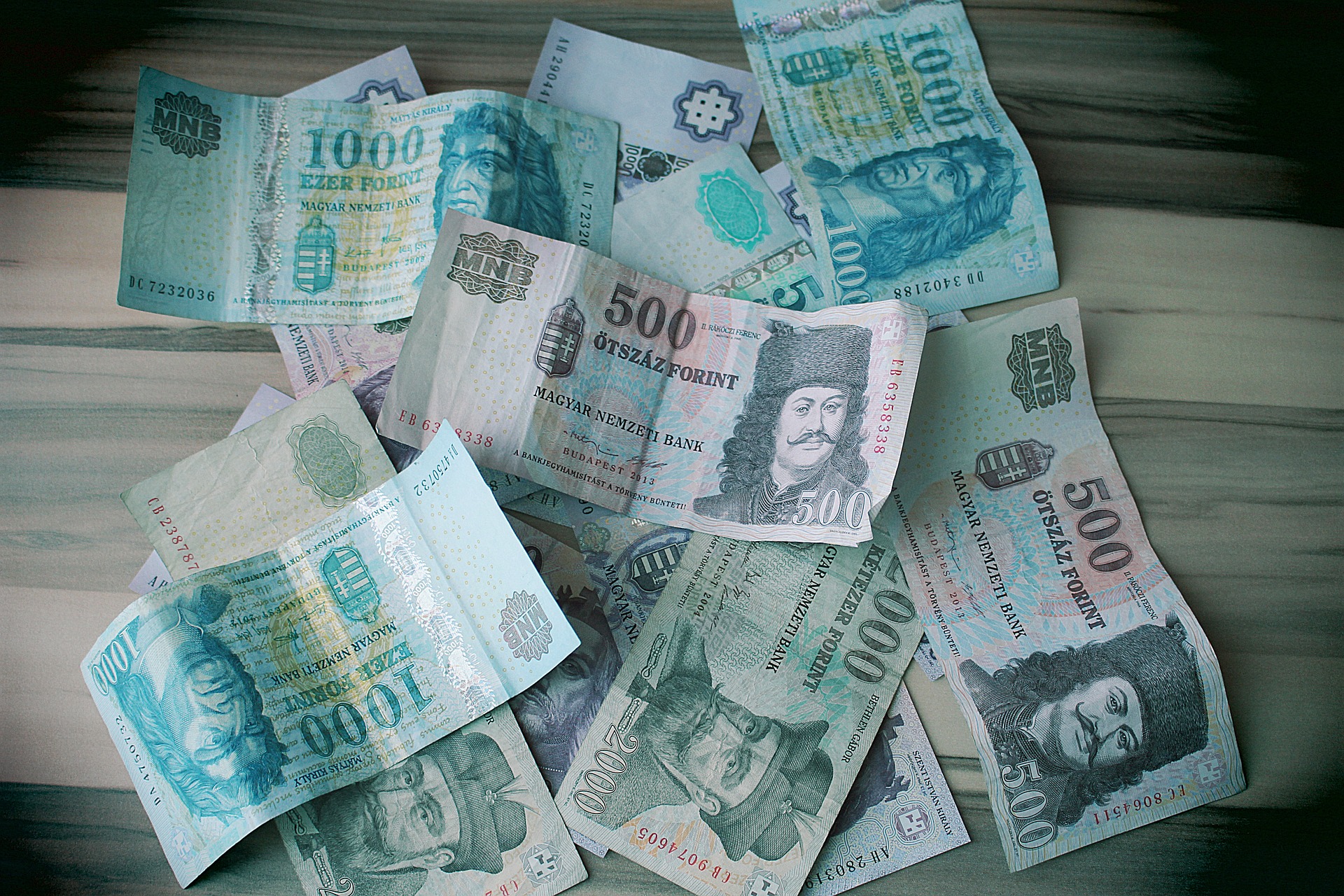
As the war between Russia and Ukraine goes on, the Hungarian currency starts the new week where it left off last Friday: hitting new historic low against all major currencies.Continue reading

Hungarian rate-setters raised the central bank base rate by 100 bp to 4.40 percent at a monthly policy meeting on Tuesday. The decision, which is the biggest rate hike of recent years, is in line with forecasts and it reflects the central bank’s commitment to fighting inflation.
The members of the Monetary Council also decided to raise the O/N deposit rate by 100 basis points to 4.40 percent and the O/N and one-week collateralized loan rates by 100 basis points to 7.40 percent.
The O/N deposit rate and the collateralized loan rate mark the bottom and the top, respectively, of the central bank’s “interest rate corridor.” The base rate is paid on mandatory reserves.
In a statement released after the meeting, the Council said that the Russia-Ukraine war has “posed a much higher risk than usual” to the outlook for inflation.
The increase in inflation risks warrants a further tightening of monetary conditions. Consequently, the Monetary Council deems it necessary to continue the general tightening of monetary conditions and to continue the base rate tightening cycle by a larger increment than before, it added.
The Council said that strong negative supply effects were likely to raise inflation in the coming quarter, while higher energy and commodity prices boost inflation further on the expenditure side. Inflation is likely to decline in the second half of the year, the policymakers said, adding that the short-term path of inflation “will depend on the duration of the war, the extent and persistence of sanctions, as well as government responses.”
The central bank raised its average annual inflation forecast for 2022 to 7.5-9.8 percent, but said CPI is expected to return to the +/-1 percentage point tolerance band around the mid-term 3.0 percent target in the second half of 2023, and reach the target in the first half of 2024.
The NBH augurs a slowdown in GDP growth to 2.5-4.5 percent in 2022, depending on the duration of the war and the policy of sanctions.
The decision of the central bank’s monetary council to raise the base rate by one percentage point on Tuesday was in line with market expectations, analysts told state news agency MTI in reaction to the decision.
Gergely Suppan, senior analyst at Takarékbank, said that due to a significant increase in inflation risks, the base rate could rise to 7.00 percent by mid-year, gradually catching up with the one-week deposit rate, which is expected to reach 7.00 percent in May.
The analyst expects the one-week deposit rate and the base rate to be lowered from the second half of 2023 at the earliest, if forecasts suggest that inflation could return to the tolerance band after 2023.
The one-week deposit rate is expected to rise further, but the MNB may slow the rate of increase slightly to preserve room to maneuver, he added.
The MNB’s leadership has already prepared to resume the rate hike cycle due to a substantial rise in inflation risks caused by the demand-supply frictions, in addition to external commodity price shocks from almost all sides, Gergely Suppan pointed out.
Péter Kiss, Investment Director at Amundi Fund Management, pointed out that the war in Hungary’s neighboring country Ukraine has overruled the central bank’s previous target of a 50 basis point rate hike.
According to the analyst, all central banks, including the NBH, are now in a very difficult position, as the traditional instruments of monetary policy do not provide an effective solution to the surge in inflation caused by the resulting supply crisis, which has been exacerbated by the war.
Some analysts believe a strong government intervention might be the best solution, but this will be very costly and may require the central bank to resume government bond purchases, he said.
Zoltán Varga, senior analyst at Equilor Investment, stressed that the central bank has sent “hawkish messages:” monetary tightening needs to be faster than before, and tighter monetary conditions should be maintained for longer.
Gábor Regős, head of the macroeconomic division at Századvég Economic Research Co., also stressed that monetary policy can only moderately combat supply-side inflation, as it cannot fundamentally influence its factors.
The outbreak of the Russia-Ukraine war poses a significant inflation risk through further increases in energy prices and disruptions in supply chains, he noted.
In the longer term, interest rate conditions may stabilize at higher levels than in the past; further increases in the one-week deposit and the base rate are likely to be necessary in the future, the analyst predicts.
Following the unprecedented interest rate hike, the forint quickly strengthened against most major currencies on Tuesday. The improvement did not last long however, and on Wednesday morning the Hungarian currency started to slightly depreciate again.
The EUR/HUF exchange rate went from 373 to 371 after the decision, while the euro was quoted at 371.55 forints on Wednesday morning.
In the meantime, the forint managed to climb against the US Dollar as well, going from 339.86 to 336.69, after the rate hike. At the time of writing, the USD/HUF is trading at 337.16.
The forint also strengthened against the Swiss franc soon after the decision, climbing to 361.15 compared to 362.99 on Tuesday morning.
Featured image illustration via Pixabay